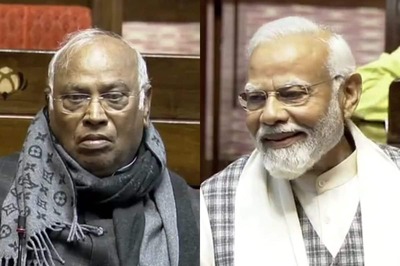
views
X
Research source
With the advent of 4K UHD and HDR content, HDCP has been updated to 2.2. Outdated devices and cables, incorrect settings, or HDMI cables can lead to an HDCP error. Read on to learn all the ways to fix this troublesome error.
Restart Your Device
Restart your TV, monitor, or Roku box. If restarting the device doesn't do the trick, try doing a reset or a power cycle. To reset/power cycle the device, turn it off, unplug it from the wall for 10-30 seconds (though you can leave it unplugged longer), then plug it back in and turn it back on.
Reseat Your HDMI Cables
Unplug your HDMI cables and plug them back in. If you have a lot of devices connected to your TV, unplug and re-plug the HDMI cables one at a time. Turn the TV on in between plugging each device back in to see if you can identify which device is causing the HDCP error. Ensure the HDMI cables are plugged in firmly, but don't force them into the port. The plastic housing of the cable should be almost flush against the plastic casing around the HDMI port, with none of the metal plug showing.
Try a Different HDMI Port
Try plugging your device into a different HDMI port. If the HDCP error is coming from a specific device, try plugging that device into a different HDMI port on your TV. If you don't have enough HDMI ports on your TV, you may need to temporarily unplug a different device while testing the ports on your TV. If the issue is due to a faulty HDMI port, you may need to replace your TV.
Change Your TV's HDMI Settings
Make sure your TV's HDMI settings are correct. To work with HDCP 2.2, your TV needs to be compatible with HDMI 2.0. You can ensure your TV is using the HDMI 2.0 format by changing your TV's HDMI settings. Each TV will be slightly different, but here's where you can change that setting on a few popular TV brands: Hisense: Switch to the input of the device giving the HDCP error and go to Menu > Picture > HDMI Format > Enhanced Format. Insignia: Press and hold the Home button then select Picture > Advanced Settings > HDMI Input Mode > Mode 2 (2.0). LG: Go to Home > HDMI > Settings > Advanced > Picture > HDMI Ultra Deep Color > On > Restart. Philips: Go to Preferences > HDMI mode > choose the device's input > HDMI Mode > Standard. Roku: Go to Preferences > HDMI mode > choose the device's input > HDMI Mode > Standard. Samsung: Go to Menu > Picture > Picture Options > HDMI UHD Color > On > Restart. Sony: Go to Home > Settings > External inputs > HDMI signal format > HDMI > choose the device's input > Enhanced mode. Toshiba: Press and hold the Home button then select Picture > Advanced Settings > HDMI Input Mode > Mode 2 (2.0). Vizio: Go to Menu > Input Settings > choose the device's output > Full HD Color > On.
Replace Your HDMI Cables
Try a different HDMI cable. Sometimes, HDCP errors are caused by faulty HDMI cables. Try a different HDMI cable, or purchase a new cable if you don't have any spares around the house.
Use an HDMI Splitter
Insert an HDMI splitter to bypass HDCP. Some users have found that adding an HDMI splitter to their setup fixed the HDCP error. This is because these splitters can bypass the HDCP requests that cause the error. Two HDMI splitters that are known for resolving HDCP errors are this ViewHD HDMI splitter and this CKITZE HDMI splitter, but you may get results from a different HDMI splitter as well. When connecting the HDMI splitter, insert the device causing the HDCP error into the splitter's input port, then connect the splitter to your TV from the output port.
Contact the Device Manufacturer
Contact your device's manufacturer for more help. If nothing else works, you may want to contact your device's manufacturer for more help. You'll first need to identify which device is causing the HDCP error, which you can do by unplugging and replugging each HDMI device one by one. The device manufacturer may be able to offer more personalized one-on-one assistance to fix the problem.
Replace Your Device
Replace the device causing the HDCP error. Unfortunately, sometimes, HDCP errors are caused by outdated hardware inside the devices themselves. The only way to fix this is to replace the device with a newer version. Look for stores that accept old device trade-ins if your device isn't terribly old. While you may not get a lot back for the device, it can help offset the cost of a new device a little bit.




















Comments
0 comment